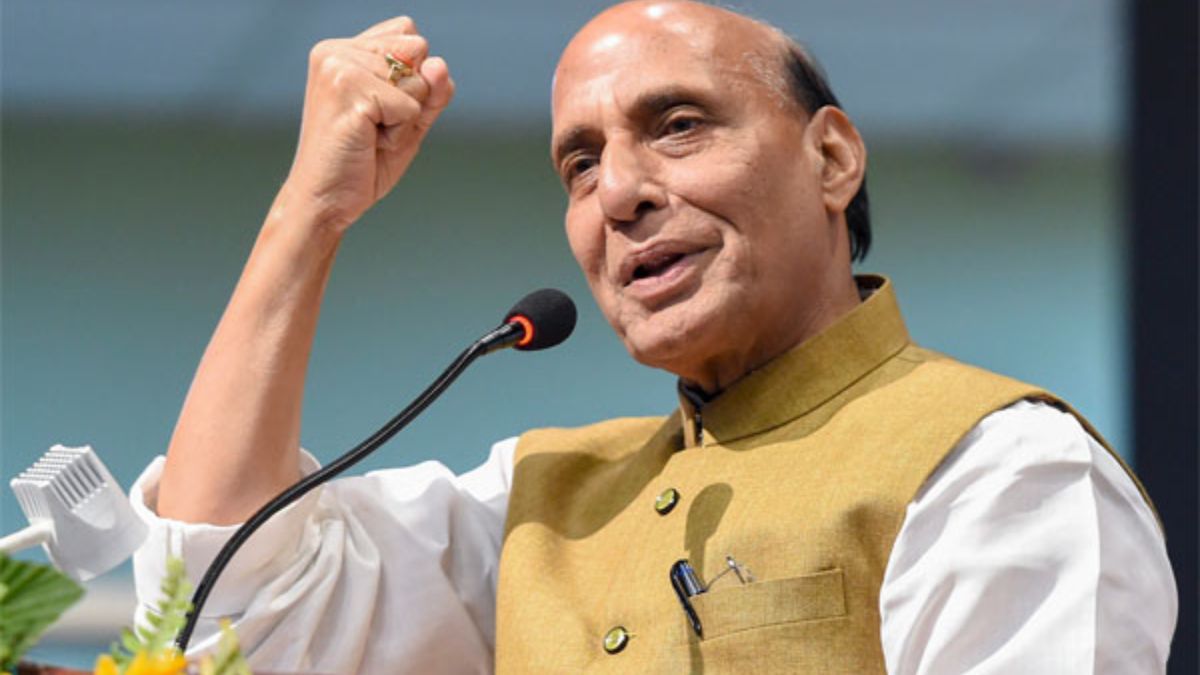Defence Minister Rajnath Singh on Wednesday lauded the Indian armed forces for Operation Sindoor and emphasised India’s moral clarity during combat, saying that the country drew from Lord Hanuman’s ideals and “only struck those who killed our innocents.”
Last night, the Indian Armed Forces displayed their valour and courage, writing a new chapter in history, said the defence minister.
“The Indian Army carried out the operation with precision, alertness, and sensitivity. The targets we had set were destroyed exactly as per the plan. The Army showed great care to ensure that no civilian areas or populations were affected. In short, the Army demonstrated accuracy, vigilance, and humanity.”
In the wee hours of May 7, India’s armed forces launched a targeted operation, striking terror camps in Pakistan and Pakistan-occupied Kashmir (PoK) in retaliation for the Pahalgam terror attack.
Catch up on all the live updates from Operation Sindoor here
‘Like Lord Hanuman destroyed Ashok Vatika…’
Defence Minister Rajnath Singh likened the attack to the one Lord Hanuman conducted on Ashok Vatika, while looking for Sita, who was abducted and imprisoned by Raavan.
Quoting from the Ramcharitmanas, Singh said, “Mitron, humne Hanuman ji ke adarsh ka paalan kiya hai. Unhone jo Ashok Vatika ujaadte samay kiya tha — jinh mohi maara tinh main maare. Humne keval unhi ko maara jinhone humare masoomon ko maara (Friends, we have followed the ideals of Lord Hanuman. Just as he said during the destruction of Ashok Vatika — ‘I only struck those who attacked me’ — we too have targeted only those who harmed our innocent people)."
Speaking at an event held to mark the inauguration of 50 infrastructure projects of the Border Security Force (BSF), Singh also lauded Prime Minister Narendra Modi for his unconditional support to the armed forces following the brutal killings in South Kashmir’s Pahalgam on April 22.
“Under the leadership of Prime Minister Shri Narendra Modi, our forces launched ‘Operation Sindoor’ and, like before, dealt a strong blow by destroying the camps where terrorists were being trained. India has exercised its ‘Right to Respond’ to the attack on its own soil. This operation was carried out with full consideration and careful planning. The action was deliberately limited to terrorist camps and their infrastructure to crush their morale,” he said.
Why India’s Operation Sindoor was one of a kind
Operation Sindoor marked a significant shift in India’s military strategy, both in scale and scope.
Unlike earlier missions such as the 2016 Uri surgical strikes or the 2019 Balakot airstrikes, which were more contained in nature, Operation Sindoor was technologically advanced, broader in reach, and executed with a new kind of strategic depth.
In 2019, India had targeted a single Jaish-e-Mohammed training camp in Pakistan’s Khyber Pakhtunkhwa province. But this time, the forces hit nine separate terror hubs—spread across both Pakistan and Pakistan-occupied Kashmir (PoK).
The strikes covered a wide arc of locations including Muzaffarabad, Kotli, Bahawalpur, Rawalakot, Chakswari, Bhimber, Neelum Valley, Jhelum, and Chakwal.
As security analyst Aadil Mir told ANI, “India has crossed two significant thresholds… striking multiple sites and targeting Pakistan’s heartland. This goes far beyond 2019.”
Another major departure from earlier operations was the involvement of all three armed forces—the Army, Navy, and Air Force—working together in sync.
The mission also showcased India’s high-tech arsenal . SCALP (Storm Shadow) missiles, with a range of over 250 kilometres, were deployed, alongside Hammer precision bombs and loitering munitions , offering deep-strike capabilities and pin-point accuracy.
According to a report in The Indian Express, another striking element was the philosophy behind the operation’s name. Instead of focusing on military might, the mission was named to honour the victims of the Pahalgam terror attack—where 26 civilians, mostly tourists and families, were killed.
Sources said Prime Minister Narendra Modi personally chose the name “Operation Sindoor”, as a tribute to the women who lost their husbands in the attack—referencing the traditional red sindoor worn by married Hindu women.
In the past, India’s military operations against Pakistan had names like Operation Vijay, Operation Trident, Operation Safed Sagar, and Operation Bandar.
With input from agencies


)

)
)
)
)
)
)
)
)



